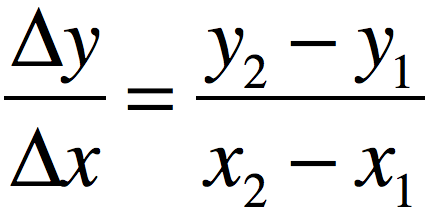using the function f(x)=2(x+1)(x+5), and the graph chosen above, determine the following:
1. range
2. x-intercepts
3. end behavior

1. if the parabola has a minimum (facing up), it can be written as y ≥ or [#, ∞) . if the parabola has a maximum (facing down), it can be written as y ≤ or [-∞, #). in this graph of the function f(x)=2(x+1)(x+5), the parabola is facing up and its minimum value is -8 so the range would be y ≥ -8 or [-8, ∞)
2. to find the x-intercepts, we need to factor the function, but this function is already in intercept form so we just need to solve it x+1=0; x+5 =0. after solving, we have (-1, 0) and (-5, 0)
3. to find the end behavior we need to look at the end of the left end and right end of the x-axis. because the graph is going up so we would write it as: as x -> -∞, y -> ∞. as x -> ∞, y -> ∞
which of the following equations is f(x)=3(x−5)2−7 expressed in standard form?
question options:
f(x)=3x2+30x+79
f(x)=3x2+30x+83
f(x)=9x2+42x+49
f(x)=3x2+30x+68
to express the equation in standard form we need to simplify it
3(x2-10x+25)-7
3x2-30x+75-7
3x2-30x+68
f(x)=3x2+30x+68 is the answer
what is the average rate of change over the interval [0, 2]?
question options:
-1
-2
-3
-4

(-4-4)/(2-0) = -8/2 = -4
the average ROC over the interval [0, 2] is -4
the equation y=−x2−2x+8 is graphed on the set of axes below
based on this graph, what are the roots/zeros of the equation y=−x2−2x+8
to find the roots/zeros we need to factor the equation:
-x2-2x+8=0
-(x2+2x-8)=0
-(x+4)(x-2)=0
x+4=0; x-2=0
x=-4 x=2
(-4, 0) (2, 0)
which of the following represents the following equation rewritten in vertex form?
f(x) =x2−14x+7
question options:
f(x)=(x−7)2+7
f(x)=(x+7)2−42
f(x)=(x−7)2−42
f(x)=(x−14)2−42
x2-14x=-7
-14/2=-7, (-7)2=49
x2-14x+49=-7+49
(x-7)2=42
f(x)=(x-7)2-42
what is the average rate of change of the function f(x)=x2+4x−5 over the interval [1,5]?
question options:
14
5
10
11
f(1)=12+4(1)-5=0
when x=1, y=0
f(5)=52+4(5)-5=40
when x=5, y=40

(40-0)/(5-1)=40/4=10
the average ROC over the interval [1, 5] is 10
using the function f(x)=−(x+2)2+4, and the graph chosen above, determine the following:
1. vertex
2. min/max (choose one)
3. axis of symmetry
4. domain
5. decreasing interval
1. a(x-h)2+k=−(x+2)2+4
vertex=(h, k)
because h is negative so we have to switch the sign of 2, it would be -2, k stays the same. the vertex is (-2, 4)
2. this graph has a maximum, maximum is the y value of the vertex so it would be y=4
3. axis of symmetry is the x-value of the vertex so it would be x=-2
4. domain is all real numbers
5. in this graph, decreasing is the right side so we would write it as (#, ∞). since the aos is -2, the decreasing interval would be (-2, ∞)
covert the following functions into standard from:
1. -3(x + 5)(x - 1)
2. (x + 12)(x + 4)
1. -3(x2-x+5x-5)
=-3x2+3x-15x+15
=-3x2-12x+15
2. x2+4x+12x+48
=x2+16x+48
find the average roc over the interval [-2, -1] for f(x)=x2+3x
f(-2) = (-2)2 + 3(-2) = -2
when x=-2, y=-2
f(-1)= (-1)2+3(-1)=-3
when x=-1, y=-3
(-3-2)/(-1-(-2)=-5/1=-5
the average roc over the interval [-2, -1] is -5
which function represents the parabola shown in the accompanying graph?

question options:
f(x)=(x+1)2−3
f(x)=−(x−3)2−3
f(x)=−(x−3)2+1
f(x)=−(x+3)2+1
the answer is f(x)=−(x+3)2+1 because the vertex of this function matches the vertex on the graph
covert the following functions into intercept from:
1. f(x)=x2+13x+40
2. f(x)=4x2-8x-12
1. 8x5=40; 8+5=13
=(x+8)(x+5)
2. 4(x2-2x-3)
1x(-3)=-3; 1+(-3)=-2
=4(x + 1)(x - 3)
find the average roc over the interval [1, 3] for f(x)=2x2+8x+11
f(1)=2(1)2+8(1)+11=21
when x=1, y=21
f(3)=2(3)2+8(3)+11=53
when x=3, y=53
(53-21)/(3-1)=32/2=16
the average roc over the interval [1, 3] is 16
using the function f(x)=x2−6x+2, and the graph chosen above, find the following:
1. vertex
2. axis of Symmetry
3. range
4. y-Intercept
5. increasing interval

1. to find the vertex we can change it into the vertex form but we have a graph here so it's faster to look at it. since the vertex is the highest/lowest point on a graph so in this function it would be (3, -7)
2. aos is the x-value of the vertex. aos is x=3
3. to find the range, first we need to determine the maximum/minimum line, the minimum is -7 so the range would be written as: y ≥ -7 or [-7, ∞)
4. y-intercept is the c value in the function which is 2 so the y-intercept is (0, 2)
5. increasing is the right side and the aos is 3 so the increasing interval would be (3, ∞)
covert the following function into vertex from:
f(x)=-2x2-4x+3
f(x)=a(x-h)2+k
a=a
h=-b/2a
h=-(-4)/2(-2)=4/-4=-1
k=-2(-1)2-4(-1)+3=5
f(x)=-2(x+1)+5
find the average roc over the interval [2, 4] for f(x)=4x2
f(2)=4(2)2=16
when x=2, y=16
f(4)=4(4)2=64
when x=4, y=64
(64-16)/(4-2)=48/2=24
the average roc over the interval [2, 4] is 24